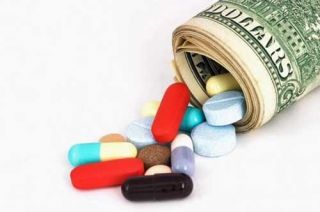
A group of more than 100 experts from more than 15 countries wrote an editorial in the medical journal Blood, to call attention to the impact of exorbitant drug prices on patients.
Focusing on their area of expertise in chronic myeloid leukemia (CML) -- a rare form of cancer affecting white blood cells – the authors consider why some patients with CML now live close to normal lifespans when others are not likely to live five years. They conclude that for those who cannot access the “miracle drug” hailed for raising the 10-year survival rate for CML to 80 percent, high drug prices are the limiting factor. In the United States, where the 5-year survival rate for the disease is still only at 60 percent, the price of treatment is 2 to 4 times higher than in Europe and many developed countries.
The spiraling costs of cancer treatment do not only impact those diagnosed with CML. More than 90 percent of the anticancer agents approved by the FDA from 2005 to 2009 cost more than $20,000 for a 12-week course of treatment. Eleven of the drugs the FDA approved in 2012 for cancer were priced above $100,000 per year. With skyrocketing prices, the oncology drug industry has grown substantially from under $5 billion in 1998 to $19 billion in 2008 to $80 billion in 2012. Market researchers forecast that by 2018 the industry will reach over $100 billion.
The future is bright for Big Pharma. A report from the management consulting and market research firm Lucintel highlights that aging populations, changing lifestyles, unhealthy eating habits, the rise in chronic diseases, and increased diagnosing provide “growth opportunities for the oncology drug industry players.” A daily newsletter on industry trends, Fierce Pharma, also points out that cancer drugs have their own, to use an industry term, “unique drivers,” and adds that, “they treat deadly, frightening diseases, so patients demand them, even at nosebleed prices.”
When do industry opportunities become unnecessary exploits? This seems like a reasonable, ethical, and important question. And it’s the key question the CML experts raised in their editorial.
Yet a recent op-ed in Forbes criticized the CML experts, arguing that high drug prices are necessary because companies need economic incentives to invest in new research lines; larger profits attract larger investments into medical research; and intellectual property protections give drug firms the power to turn a profit. Research is expensive. But how expensive?
Professor of comparative health care Donald Light has written extensively about the pharmaceutical industry, and the myths surrounding the cost of research and development. Using data reported to Tufts University, his research calculated the median net corporate cost to develop a new drug to be $56 million in 2011. The cost of development for “me-too” drugs, those that are minor variations of pharmaceuticals already on the market, were even lower.
The CML experts estimated $60 to 90 million for R&D, or $1 billion at the high end. Based on that highest estimate, a company would recoup the cost of development after it sold about a billion dollars worth of the drug. The industry claims, to the contrary, that “few medicines provide revenues to match their development costs—just two out of 10 approved medicines earn enough to recoup the average costs of R&D.” If the reported industry investment in R&D went up by $34.2 billion from 1995 to 2010, why did the revenues increase six times faster by $200.4 billion? Donald Light suggests that the industry exaggerates the costs of R&D by leaving revenues out of the picture. “Net profits after taxes,” he writes, “consistently remain substantially higher than profits for all other Fortune 500 companies.”
Huge profit margins and returns on investment would definitely be attractive to investors. But at what cost to patients?
The Forbes op-ed writes off the deadliest harm of high drug prices by saying, “Premature patient deaths are obviously a tragedy. But the price of these drugs pales in comparison to their economic value.” The logic is that before certain drugs were developed, patients suffering from said disease “could not buy a longer life at any price.” This sentiment gives me pause.
In the United States illness and medical bills contribute to a large and increasing share of US bankruptcies. Debt is a major reason people forego medical care. Cancer care accounts for about $124.6 billion in medical care expenditures. Productivity losses each year due to cancer are estimated at $7.5 billion in disability days alone. The cost of lost productivity due to premature death is estimated at $124 billion. And for the patients who are among those who tragically died because they couldn't afford expensive treatments -- well, those costs are more obvious to the people who loved them than to the industry that treats them.
Artificially inflated drug prices are not helping to alleviate these problems. In the global drug market, even the more modestly priced drugs are not accessible to a majority of people. The Forbes op-ed argues that the “revenues flowing to pharmaceutical companies from these drugs are but a trivial fraction of the value they create.” That may be true. I guess it depends on what’s in your wallet.
Dr. Gayle Sulik is the author of Pink Ribbon Blues: How Breast Cancer Culture Undermines Women's Health. More information is available on the book's website.
© 2013 Gayle Sulik, PhD ♦ Pink Ribbon Blues on Psychology Today




